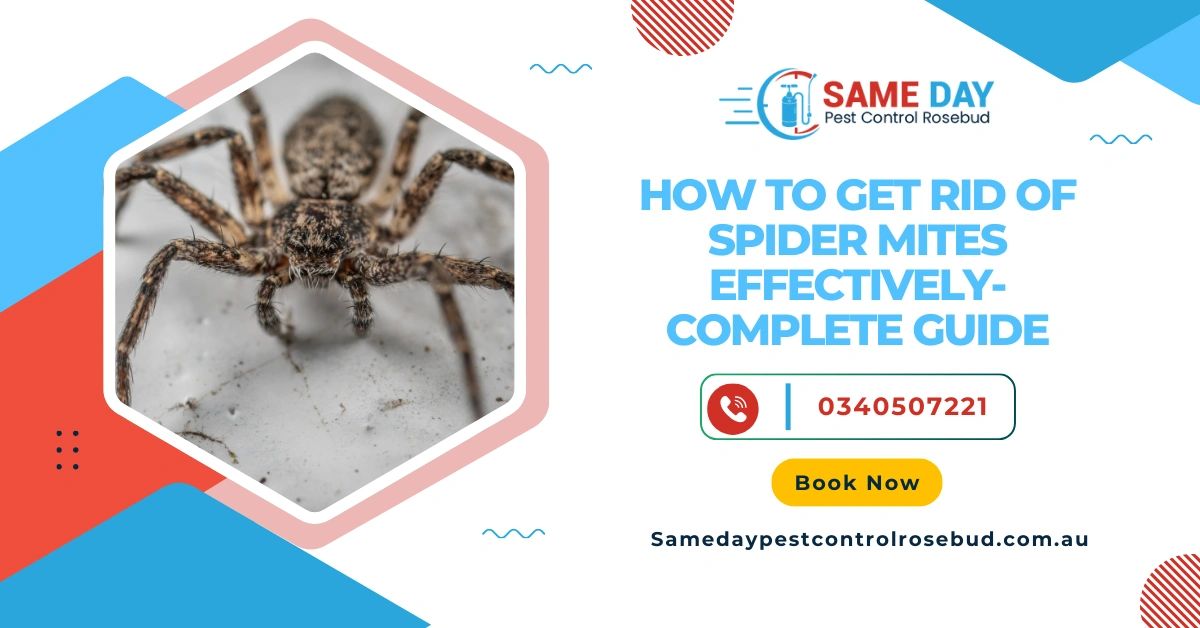Who loves to see their garden and plans ruined? No one does! But tiny spider mites can do it effortlessly. These bugs eat away your plants, and if you don’t eliminate and prevent them on time, they might get out of control. Therefore, hiring pest control Rosebud experts is essential. This post will help you understand these pests and ways to remove them. Are you ready to kick them out? If yes, here we go!
What Are Spider Mites and How to Spot Them?
Spider mites are tiny pests measuring around 1.5 inches belonging to the arachnid family that feed on plant sap, causing damage to many plants, including crops, ornamentals, and houseplants. These pests are known for their destructive feeding habit, rapid reproduction rates, and ability to ruin plants, leading to yellowing leaves, stippled or speckled foliage, and eventual plant decline if left untreated. Spotting spider mites can be challenging due to their small size and tendency to hide on the underside of leaves. However, there are several signs to look out for:Fine Webbing :
Spider mites often produce fine silk webbing on the leaves and stems of infested plants, which may appear as a delicate webbing between leaves or along the veins on the underside of leaves.Stippling or Speckling :
Infested leaves may develop small, yellow, or white spots, known as stippling or speckling, caused by the mites feeding on plant cells and sucking out the sap.Leaf Damage :
As spider mite infestations progress, leaves may become distorted, curled, or bronzed, with severe infestations leading to leaf drops and an overall decline in plant health.Presence of Mites :
While spider mites are difficult to see with the naked eye due to their small size, you may be able to spot them by carefully inspecting the underside of leaves with a magnifying glass. Look for tiny, oval-shaped mites moving slowly along the leaf surface.
DIY Hacks to Eliminate Spider Mites
-
- Neem Oil: Neem oil is a natural insecticide and miticide that can effectively control spider mites. Dilute neem oil according to the manufacturer’s instructions and spray it onto affected plants, focusing on the undersides of leaves where spider mites tend to congregate.
- Alcohol: Rubbing alcohol (isopropyl alcohol) can be diluted with water and sprayed onto plants to kill spider mites on contact. Mix one part alcohol with one part water in a spray bottle and thoroughly coat the leaves of infested plants.
- Horticultural Oil: Horticultural oils, such as mineral or neem oil, suffocate spider mites, and their eggs by coating their bodies and blocking their breathing pores. Dilute horticultural oil according to the manufacturer’s instructions and spray it onto infested plants, making sure to cover the undersides of leaves where spider mites hide.
- Insecticidal Soap: Insecticidal soap is an effective and environmentally friendly option for controlling spider mites. Mix insecticidal soap with water according to the manufacturer’s instructions and spray it onto affected plants, paying close attention to the undersides of leaves where spider mites are most prevalent.

